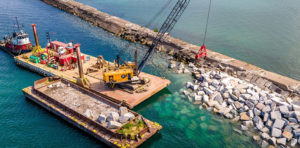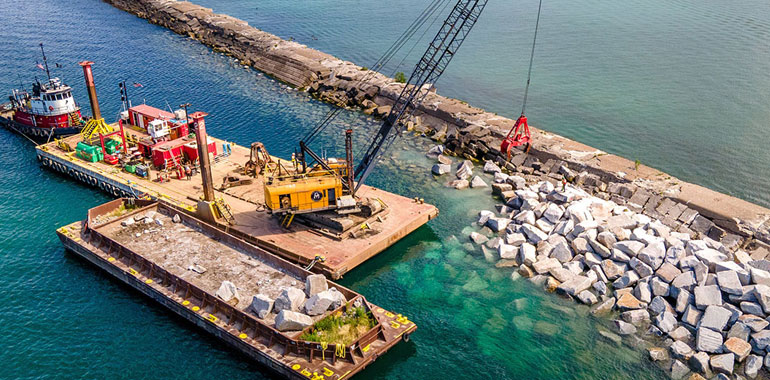
Enactment of the Water Resources Development Act (WRDA) of 2020 in December sent a ringing message of hope to the maritime industry. After years of fighting to get money available for a long list of projects, officials will finally see the funding flow to upgrade U.S. ports, inland waterways, and locks and dams.
The frustration for maritime stakeholders is that there have been taxes and fees in place for decades to maintain the nation’s ports and inland waterways. The Harbor Maintenance Trust Fund (HMTF), established in 1986, has long taken in more revenue than Congress has appropriated for projects. Now, all designated revenue from the fund will be available.
“There was a presumption in the mid-1980s that if there was a tax that Congress would appropriate these funds,” said Steve Fisher, executive director of the American Great Lakes Ports Association. “We found a good amount of the money wasn’t getting spent.”
“The biggest thing is that (the Harbor Maintenance Tax) was established to fund 100 percent of the maintenance of federal navigation channels,” said Jim Walker, director of navigation policy and legislation for the American Association of Port Authorities. “There’s a $10 billion amount on the books to fund 100 percent of the maintenance of federal navigation channels.”
In most coastal ports and those on the Great Lakes, the primary concern has been dredging. The U.S. Army Corps of Engineers is responsible for keeping the channels open so fully laden ships can get in to offload their cargo. “Ports are not naturally deep,” Fisher said. “And modern cargo ships when they sit in the water, they need clearance underneath them.”
If a ship needs to carry less than a full load to gain access, the economic impact is significant. “For a vessel to have to light-load 1 foot, it’s a million-dollar impact to the shipper,” Walker said.
More than 400 ports and 25,000 miles of navigation channels are dredged throughout the United States, according to the U.S. Army Corps of Engineers. When ports were only getting partial funding for these projects, a lot of work was left on the table.
“Getting the full funding means a full job can be done in an area instead of spot dredging,” Walker said.
New language in WRDA 2020 also ensures that HMTF spending doesn’t count against the federal budget. If all the money in the fund isn’t spent in a given year, it rolls over to the following year. In 2020, Fisher said Congress appropriated $1.65 billion for coastal and Great Lakes port maintenance
Some ports like Seattle and Los Angeles/Long Beach are naturally deep, but companies delivering cargo there still pay the Harbor Maintenance Tax. Calling themselves “donor ports,” these entities asked for and received their share of the fund to use it for other site improvements like repairing rock jetties. Great Lakes port operators then asked for a guarantee that the 12 percent that historically went to them continued.
In the final tally, Fisher said 12 percent of the HMTF was directed to donor ports, 15 percent to ports that handle less than 1 million tons of cargo per year, 17 percent to strategic military ports and 13 percent to Great Lakes ports.
Enactment of WRDA 2020 also formally authorized the expansion of the Houston Ship Channel, which handles vessels calling on the No. 1 port for total waterborne tonnage in the United States. Walker pointed out that this is a stand-alone project, not part of the maintenance trust.
For inland waterway users, the legislation included a cost-share adjustment that was a top priority for the Waterways Council Inc. and the American Waterways Operators. Under WRDA 2020, cost sharing for major inland projects shifts from 50 percent Inland Waterways Trust Fund/50 percent general revenues to 35 percent IWTF/65 percent general revenues. The fund is composed of a diesel tax levied on vessel owners.
Craig Montesano, vice president of legislative affairs for the AWO, said the cost-share change should lead to more-efficient spending. “It won’t deplete the Inland Waterways Trust Fund as quickly,” he said.
Because the members of the AWO frequent the same waterways aboard their vessels, they keep an eye out for potential problems. In 2020, Victoria Bend on the Lower Mississippi River shoaled up because of silt coming down the river, a reoccurring problem for vessel operators and shippers. Enactment of WRDA 2020 holds the promise to continue and possibly expand dredging at similar inland hot spots.
“There’s always something that’s a choke point that needs to be addressed,” Montesano said. “Unlike roads, there are no detours.”
Eric Colby

